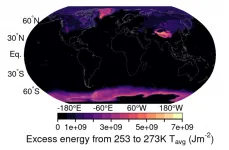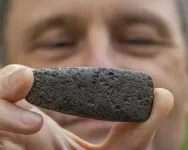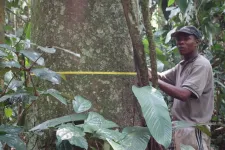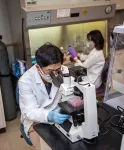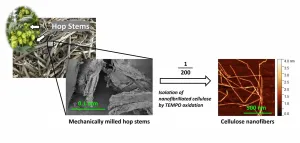Scientists publish a how-to guide for creating mouse-human chimeric embryos
The research enables far more accurate models of human development and disease and could help solve the shortage of organs for transplant
2021-07-02
(Press-News.org) BUFFALO, N.Y. -- A year after University at Buffalo scientists demonstrated that it was possible to produce millions of mature human cells in a mouse embryo, they have published a detailed description of the method so that other laboratories can do it, too.
The ability to produce millions of mature human cells in a living organism, called a chimera, which contains the cells of two species, is critical if the ultimate promise of stem cells to treat or cure human disease is to be realized. But to produce those mature cells, human primed stem cells must be converted back into an earlier, less developed naive state so that the human stem cells can co-develop with the inner cell mass in a mouse blastocyst.
The protocol outlining how to do that has now been published in Nature Protocols by the UB scientists. They were invited to publish it because of the significant interest generated by the team's initial publication describing their breakthrough last May.
"This paper will enable many scientists to use this new platform to study the human disease of their interest," said Jian Feng, PhD, professor of physiology and biophysics in the Jacobs School of Medicine and Biomedical Sciences at UB and senior author. "Over time, it will transform biomedical research toward a more effective use of the human model system to directly study virtually any inborn condition of an individual. It will stimulate unforeseen discoveries and applications that may fundamentally change our understanding of human biology and medicine."
The protocol will allow scientists to create animal models that Feng said provide a much more realistic picture of embryonic development than has ever been possible. These more realistic animal models also will have the potential to reveal the mechaniswms behind numerous diseases, especially those that afflict individuals from birth.
Better mouse models
"This step-by-step protocol will benefit the entire field by enabling other scientists to use our methods to generate chimeras to study human diseases that they are experts in," said Feng. "It will lead to the generation of better mouse models for various human diseases, such as sickle cell anemia, COVID-19 and many others, or various human developmental disorders."
The paper demonstrates how to generate naive human pluripotent stem cells from existing induced pluripotent stem cells that may be derived from patients with various diseases, how to generate mouse-human chimeras using these cells and how to quantify the amount of human cells in the chimeras.
"Using our method, one can now track the development of naive human pluripotent stem cells in mouse-human chimeric embryos in real-time," said Feng. These stem cells can then be manipulated either genetically or pharmacologically, providing valuable information about human development and disease.
"For example, one can label naive human pluripotent stem cells by inserting green fluorescent protein in a hemoglobin gene to study the development of human red blood cells in mouse-human chimeras," said Feng.
Another application is to generate humanized mouse models to study many human diseases.
"These mice contain critical human cells, tissues or even organs so that they more accurately reflect the human condition," said Feng. "With our method, the human cells are made along with the mouse during the development of the mouse embryo. There would be better matching and no rejections, because there are ways for the human cells to be made where there is no competition from their mouse counterparts."
Organs for transplant in the future
By allowing others to improve and adapt the method to eventually generate chimeras in larger animals, this protocol may also lead to the generation of human organs to address the dire shortage of organs available for transplant, said Feng.
"If naive human pluripotent stem cells are able to generate significant amounts of mature human cells in other larger species, it could be possible to make human tissues or even human organs in chimeric animals," Feng explained.
This would be possible using blastocyst complementation where, Feng explained, normal pluripotent stem cells from one species can reconstitute an organ for that species in a blastocyst of another species that been genetically modified not to grow that particular organ.
Feng added: "Ultimately, a better understanding of how human cells develop and grow in chimeras may enable the generation of human cells, tissues and organs in a completely artificial system and fundamentally change how we treat many human diseases. Research using chimeras is a bridge that must be crossed to reach that possibility."
INFORMATION:
Co-authors with Feng are Boyang Zhang, PhD; Hanqin Li, PhD; Zhixing Hu, PhD; and Houbo Jiang, PhD, all of the Department of Biophysics and Physiology in the Jacobs School; Aimee B. Stablewski, co-director of the Gene Targeting and Transgenic Resource of the Roswell Park Comprehensive Care Center; Donald A. Yergeau, PhD; and Brandon J. Marzullo of the Genomics and Bioinformatics Core of UB's New York State Center of Excellence in Bioinformatics and Life Sciences.
The work was supported by NYSTEM and the Buffalo Blue Sky Initiative.
[Attachments] See images for this press release:
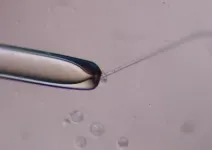
ELSE PRESS RELEASES FROM THIS DATE:
2021-07-02
When environmental physicist Kira Rehfeld, from Heidelberg University, visited Antarctica for her research, she was struck by the intense light there. "It's always light in summer. This solar radiation could actually be used to supply the research infrastructure with energy", she observes. However, generators, engines, and heaters in these remote regions have mostly been powered until now by fossil fuels delivered by ship, such as petroleum or petrol, which cause global warming. Besides the high associated economic costs, pollution from even the smallest spills is also a major problem threatening the especially sensitive ...
2021-07-02
July 2, 2021 - For health care organizations looking to improve performance and patient experiences, implementing data-driven solutions can be effective when focusing on addressing health equity and reducing patient length of stay. These topics are explored in selected member-submitted abstracts from the 2020 Vizient® Connections Education Summit that appear in a special supplement to the July/August 2021 issue of the American Journal of Medical Quality, the official journal of the American College of Medical Quality (ACMQ).
Interventions for addressing health equity
To help health care organizations address ...
2021-07-02
GAINESVILLE, Fla. --- Archaeologists have unearthed a END ...
2021-07-02
MANHATTAN, KANSAS -- Research led by Kansas State University's Suprem Das, assistant professor of industrial and manufacturing systems engineering, in collaboration with Christopher Sorensen, university distinguished professor of physics, shows potential ways to manufacture graphene-based nano-inks for additive manufacturing of supercapacitors in the form of flexible and printable electronics.
As researchers around the world study the potential replacement of batteries by supercapacitors, an energy device that can charge and discharge very fast -- within few tens of seconds -- the team led by Das has an alternate prediction. The team's work could be adapted to integrate them to overcome ...
2021-07-02
A huge global network of researchers is working together to take the pulse of our global tropical forests.
ForestPlots.net, which is co-ordinated from the University of Leeds, brings together more than 2,500 scientists who have examined millions of trees to explore the effect of climate change on forests and biodiversity.
A new research paper published in Biological Conservation explains the origins of the network, and how the power of collaboration is transforming forest research in Africa, South America and Asia.
The paper includes 551 researchers and outlines 25 years of discovery in the carbon, biodiversity and dynamics of tropical forests.
Professor Oliver Phillips, of Leeds' School of Geography, said "Our new paper shows how we are linking students, botanists, ...
2021-07-02
MANHATTAN, KANSAS -- A recent study by Kansas State University virologists demonstrates successful postinfection treatment for SARS-CoV-2, the virus that causes COVID-19.
College of Veterinary Medicine researchers Yunjeong Kim and Kyeong-Ok "KC" Chang published the study in the prestigious journal Proceedings of the National Academy of Sciences of the United States of America, or PNAS. They found that animal models infected with SARS-CoV-2 and treated with a deuterated protease inhibitor had significantly increased survival and decreased lung viral load.
The results suggest that postinfection treatment with inhibitors of proteases that are essential for viral replication may be an effective treatment against SARS-CoV-2. ...
2021-07-02
How on Earth?
It has puzzled scientists for years whether and how bacteria, that live from dissolved organic matter in marine waters, can carry out N2 fixation. It was assumed that the high levels of oxygen combined with the low amount of dissolved organic matter in the marine water column would prevent the anaerobic and energy consuming N2 fixation.
Already in the 1980s it was suggested that aggregates, so-called "marine snow particles", could possibly be suitable sites for N2 fixation, but this was never proven.
Until now..
In a new study, researchers from the University of Copenhagen demonstrate, by use of mathematical models, ...
2021-07-02
During the large second wave of the COVID-19 pandemic in fall 2020, pulmonologist and critical care provider Juan C. Rojas, MD, reflected on how disproportionately members of minority populations were being affected by the disease. After hearing similar thoughts from colleagues in New Orleans and New York City, Rojas began to wonder how, if at all, state governments planned to ensure these disparities would be addressed when COVID-19 vaccines were rolled out to the public.
In a new study published July 2 in JAMA Network Open, Rojas and his team were surprised ...
2021-07-02
(Boston)--Would you be more willing to get vaccinated against the COVID-19 virus if you could participate in a lottery for cash and prizes? The answer was surprisingly no, according to Boston University School of Medicine (BUSM) researchers who found that Ohio's "Vax-a-Million" lottery-based incentive system, intended to increase COVID-19 vaccination rates, was not associated with an increase in COVD-19 vaccinations.
Prior reports in the media had suggested that the Ohio lottery increased COVID-19 vaccinations, leading other states to use COVID-19 vaccine incentive lotteries in an attempt to increase slowing vaccination rates. "However, prior evaluations of ...
2021-07-02
Some three quarters of the biomass in hop plants used in beer-making ends up in landfills. But a group of Japanese researchers has developed a technique that 'upcycles' that waste hop into cellulose nanofibers (CNFs). A paper describing the technique was published in the journal ACS Agricultural Science & Technology on June 11.
In the past few years, craft beer-making has exploded in popularity around the world, including many beer styles that make use of many more and different types of hops than conventional commercial beers. A traditional preservative in beer, hops also add ...
LAST 30 PRESS RELEASES:
[Press-News.org] Scientists publish a how-to guide for creating mouse-human chimeric embryos
The research enables far more accurate models of human development and disease and could help solve the shortage of organs for transplant

